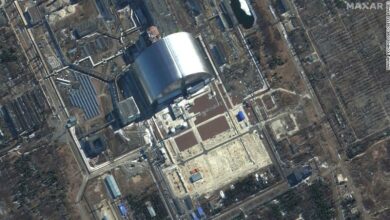
According to the International Nuclear and Radiological Event Scale (INES), only two accidents in history can be classified as level 7 events: the Fukushima nuclear disaster in 2011 and the Chernobyl power plant explosion, which took place 29 years ago, on April 26, 1986. Whereas the partial nuclear meltdown of the Fukushima's six reactors occurred when the plant was hit by a tsunami triggered by a powerfule earthquake, the fire at the Ukrainian power plant, the world's worst nuclear accident in terms of death toll, was caused by human error.
Facility operators, in violation of safety regulations, had switched off important control systems at the plant's reactor number four, allowing it to reach unstable, low-power conditions, according to an official report issued by UNSCEAR in 2008. The sudden power surge led to a series of explosions, sending a cloud of radioactive dust across northern and western Europe, affecting mainly Ukraine and neighboring Belarus. The risky experiment caused dozens of plant staff to die on the spot or immediately afterwards in the hospital, due to severe radiation exposure. Hundreds of thousands of rescue workers, including army conscripts, were sent to the accident site to put out the fire and build a concrete shell around the damaged reactor – the "Sarcophagus", which still shields the remains of the explosion.
Soviet authorities, however, had initially attempted to conceal the accident from the world's public opinion. Only on April 28, after alarming radiation levels were detected in Sweden, did the Soviet Union publicly admit the explosion had occurred. Also, in spite of the high risk of potentially lethal radiation sickness, the authorities did not begin to evacuate citizens of the nearby town of Pripyat until over 36 hours after the accident. The residents, who were being transferred by buses to the nearby Kiev Oblast, were instructed to only carry the most vital items with them, as they did not expect to be out of the city for more than three days. As a result, the ghost town of Pripyat, as well as other municipalities in the 30 km "exclusion zone" still holds the remains of the everyday life the way it was in 1986, as few residents have ventured back into the area due to the government-imposed ban.
In total, approximately 115,000 people were evacuated and subsequently relocated from Pripyat and the surrounding cities, causing vast economic losses for the entire region. However, the death toll and the ultimate health impact of the radiation, according to official estimates, have been lower than those initially expected and are still a subject of debate among international expert bodies. The highest figure offered by the environmental group Greenpeace reaches as many as 93,000 cancer deaths worldwide, whereas Ukranian NGOs claim almost 734,000 people died as a result of post-accident radiation wthin the last 29 years.
As for the environmental impact, scientific assessments show that, except for the highly contaminated exclusion area surrounding the reactor, radiation levels in the three most-affected countries have mostly returned to acceptable levels, as confirmed by the WHO report entitled "Chernobyl: the true scale of the accident." Although the psychological impact of the accident has been disastrous, and in spite of the fact that those exposed are still at increased risk of radiation-induced effects, "the vast majority of the population need not live in fear of serious health consequences due to the radiation from the Chernobyl accident," UNSCEAR report states.




